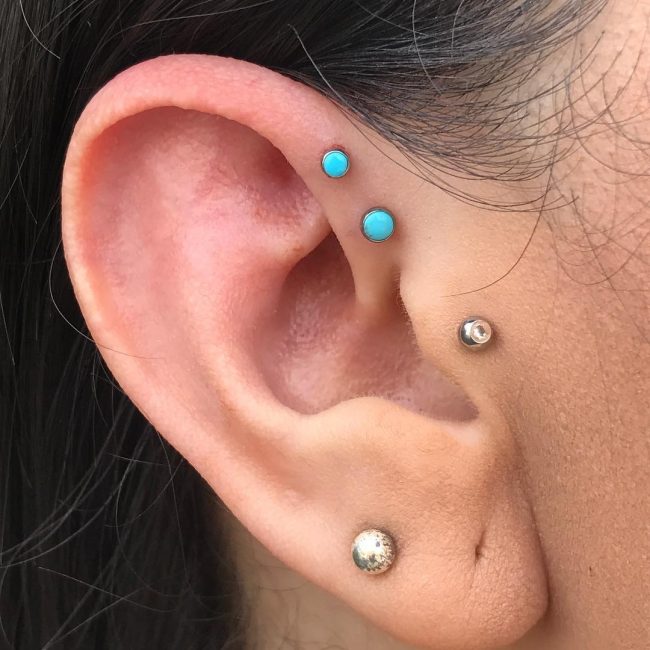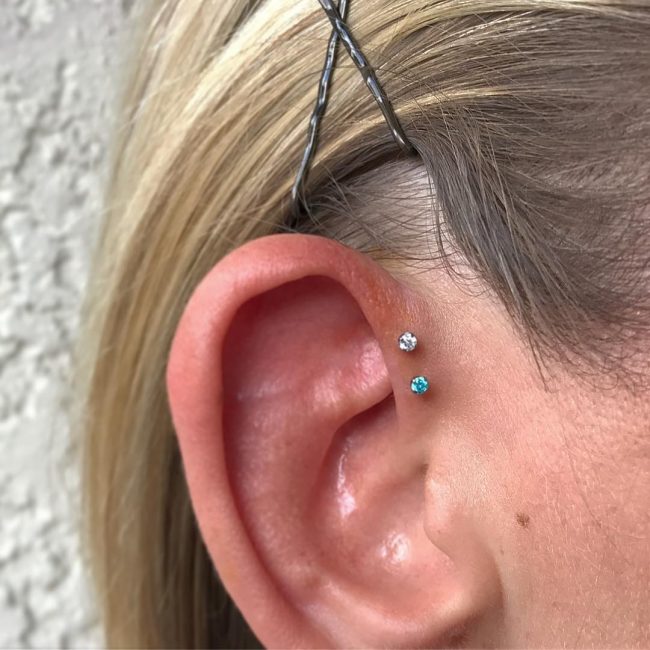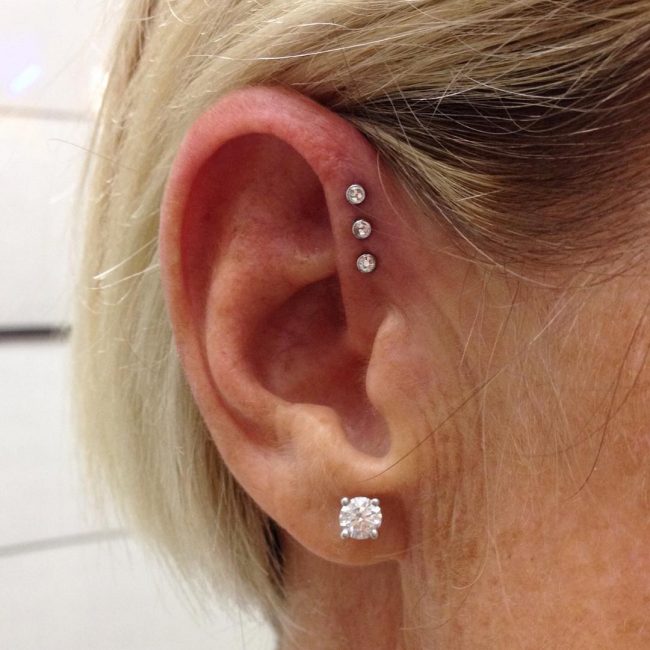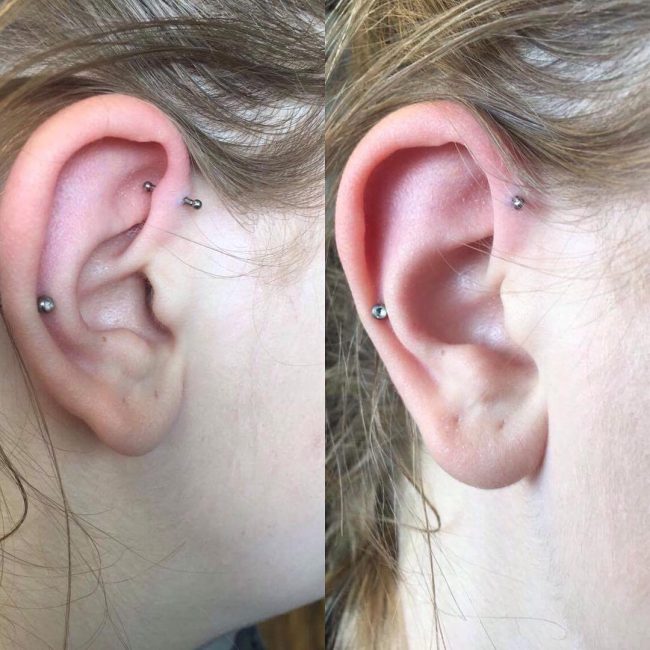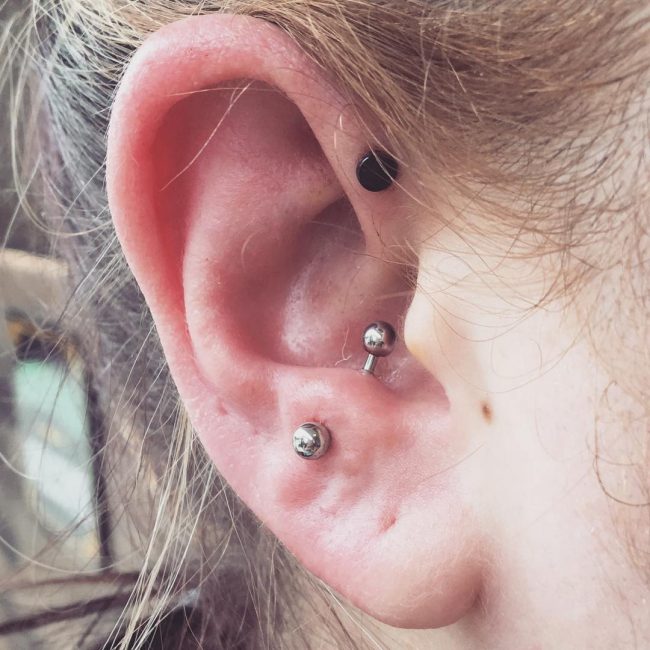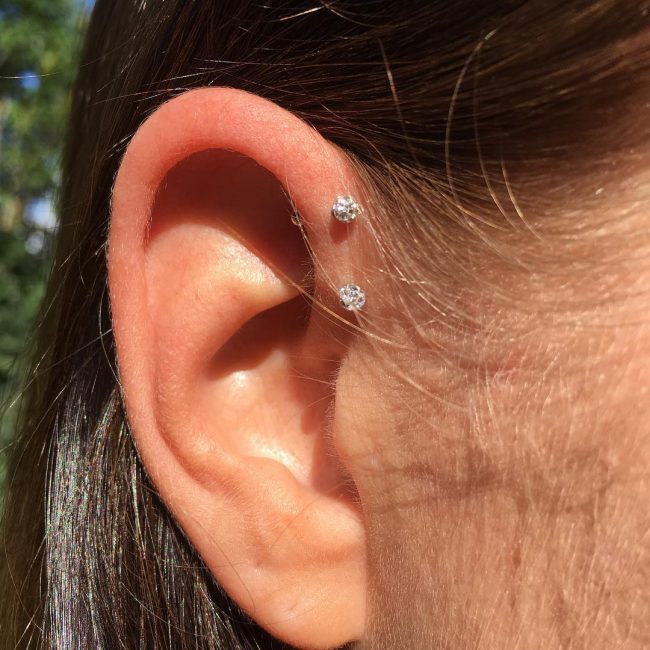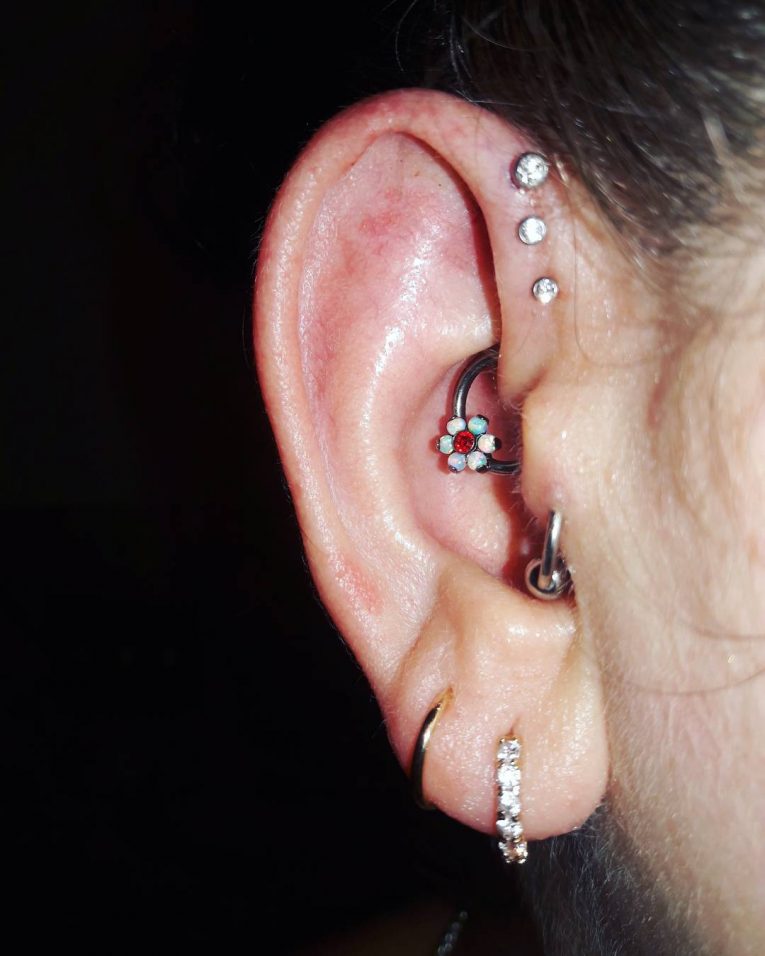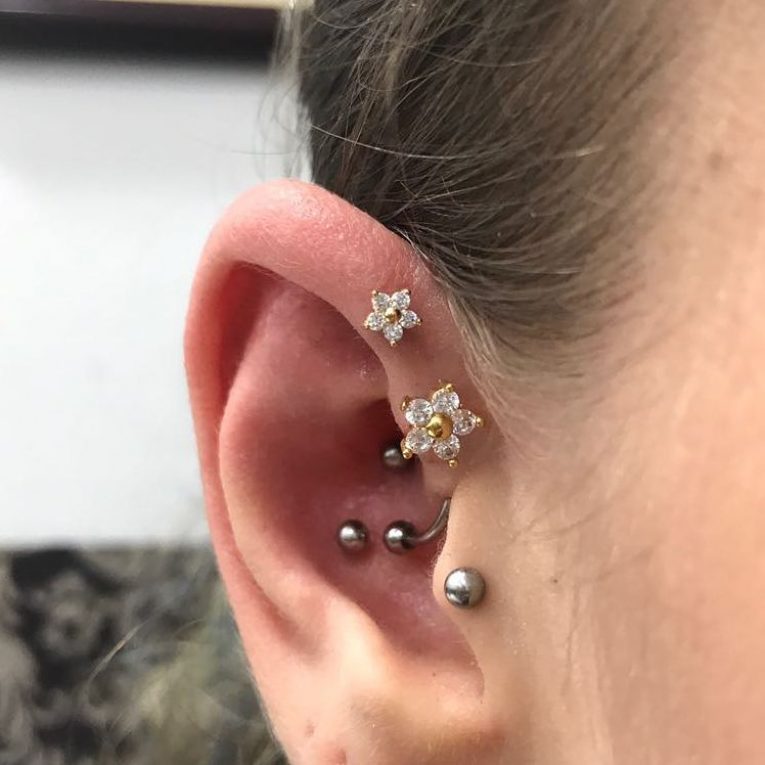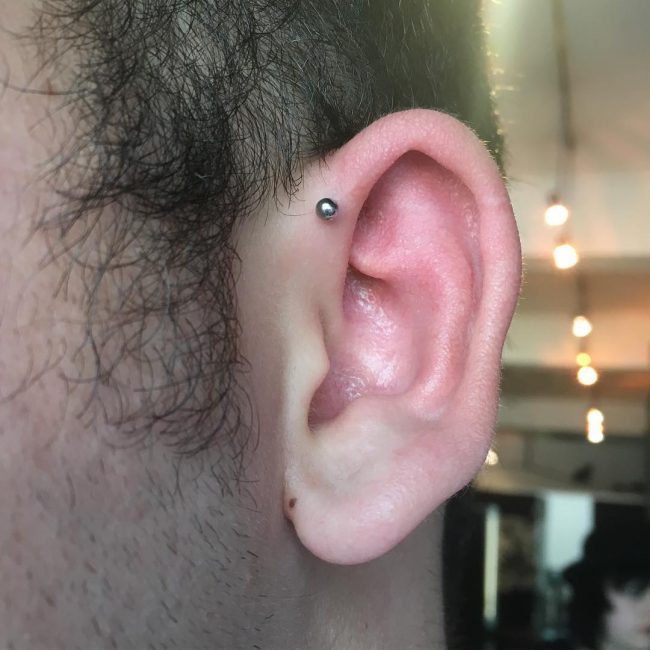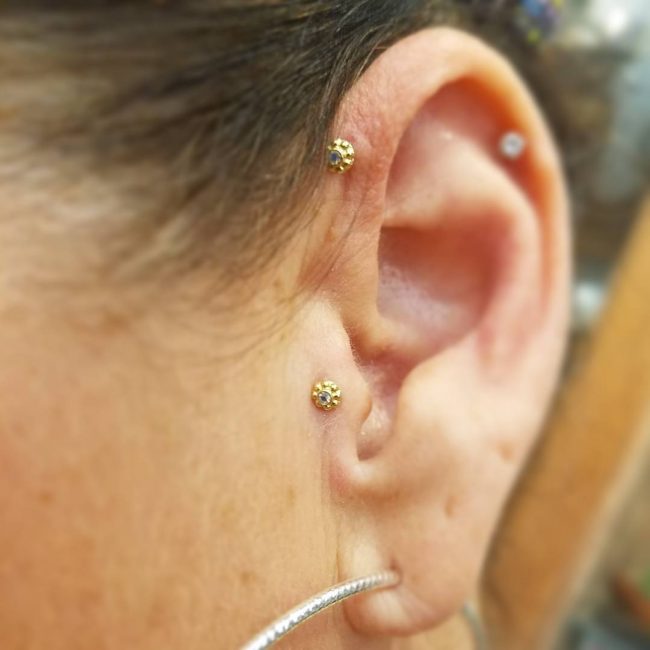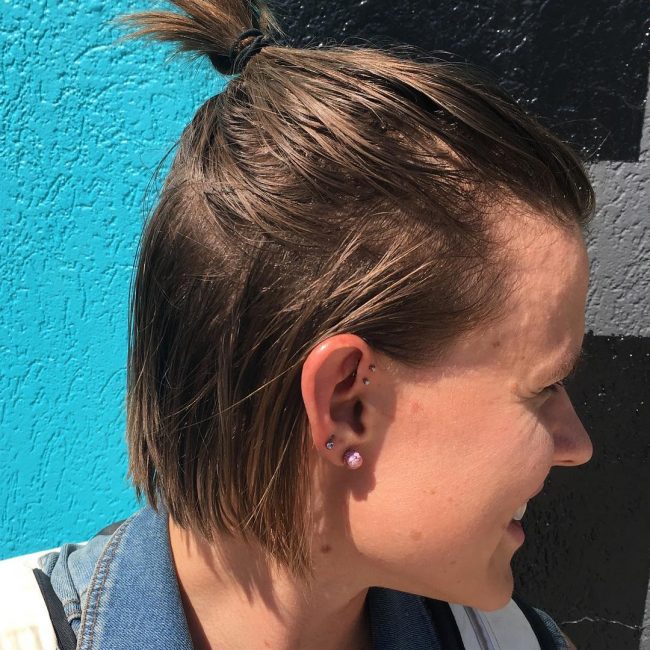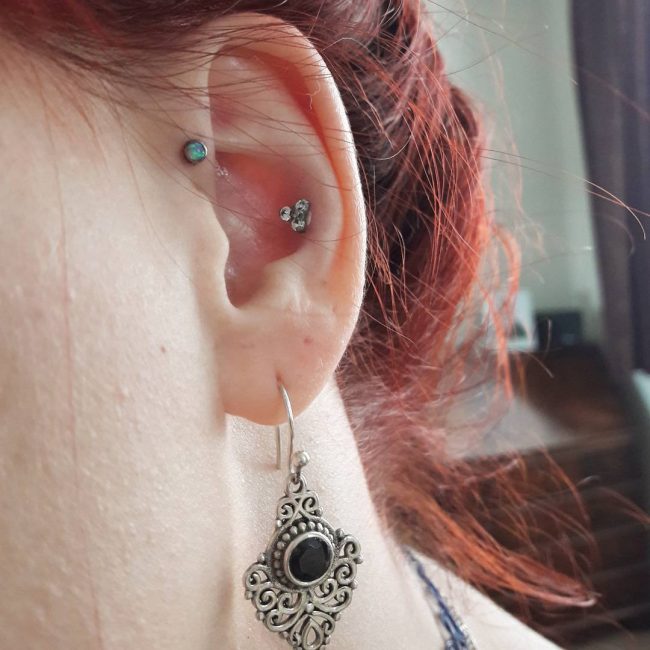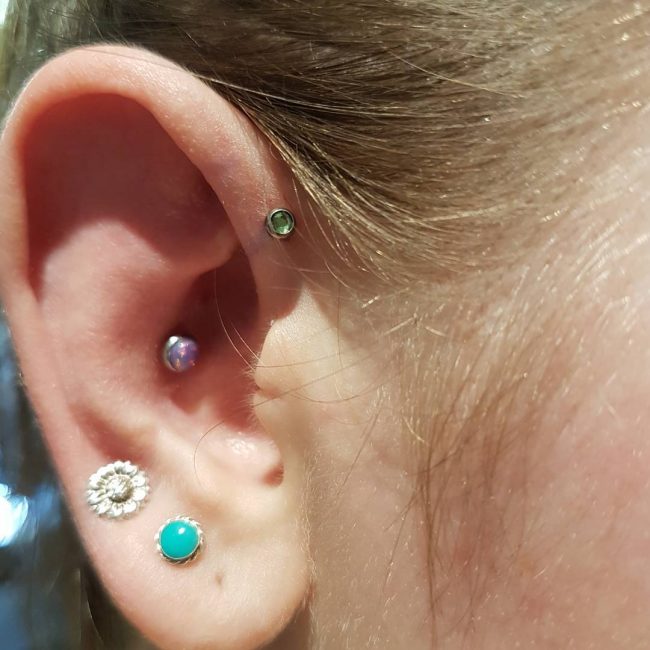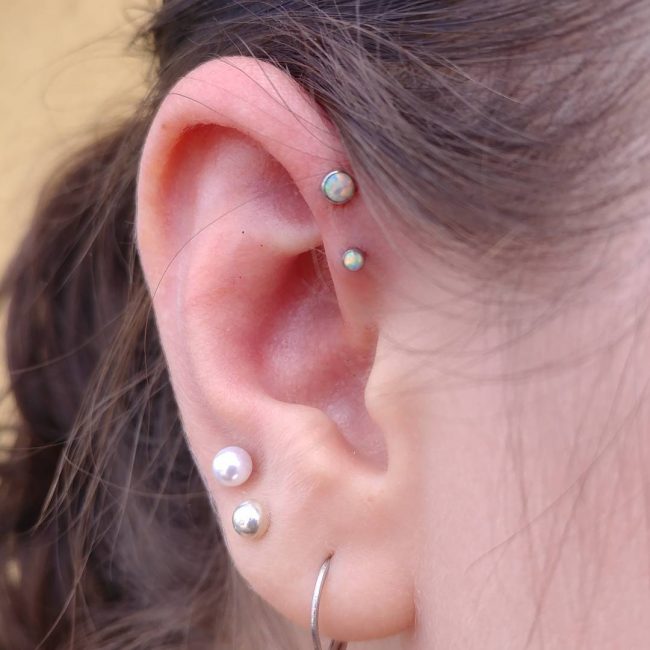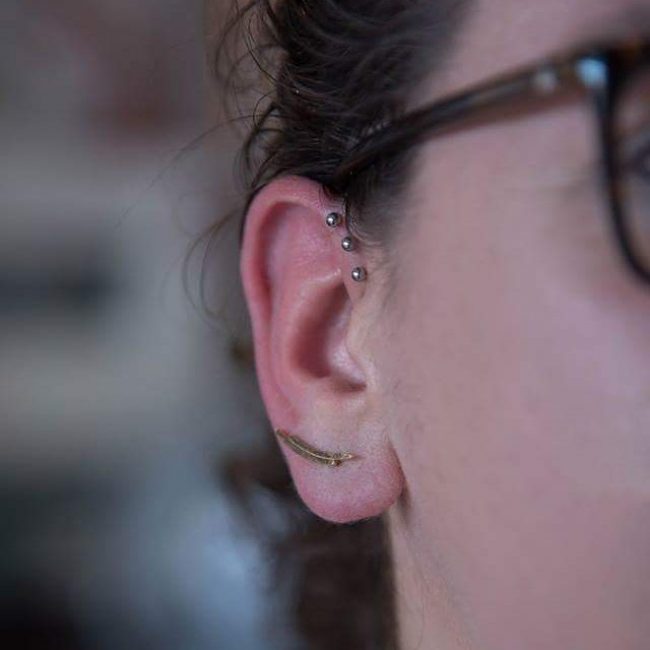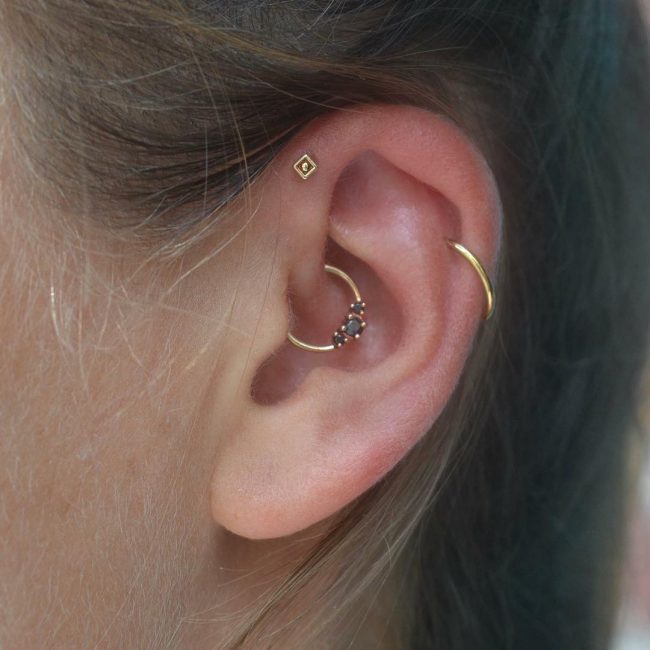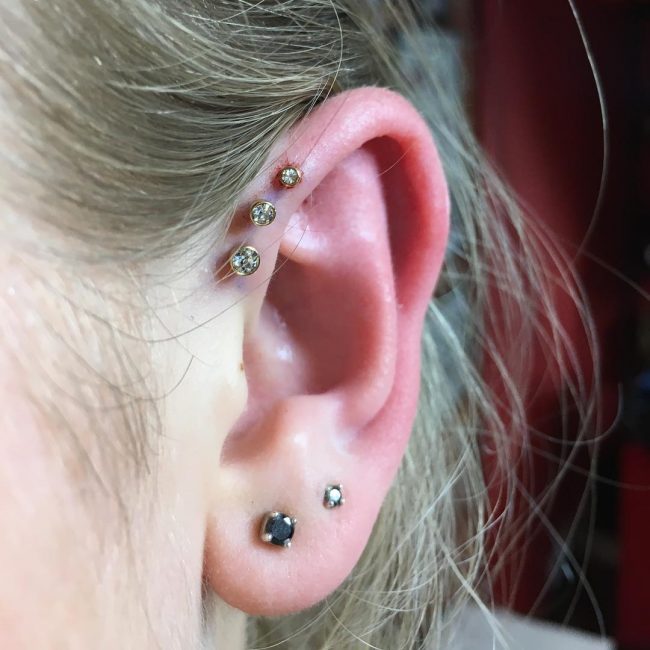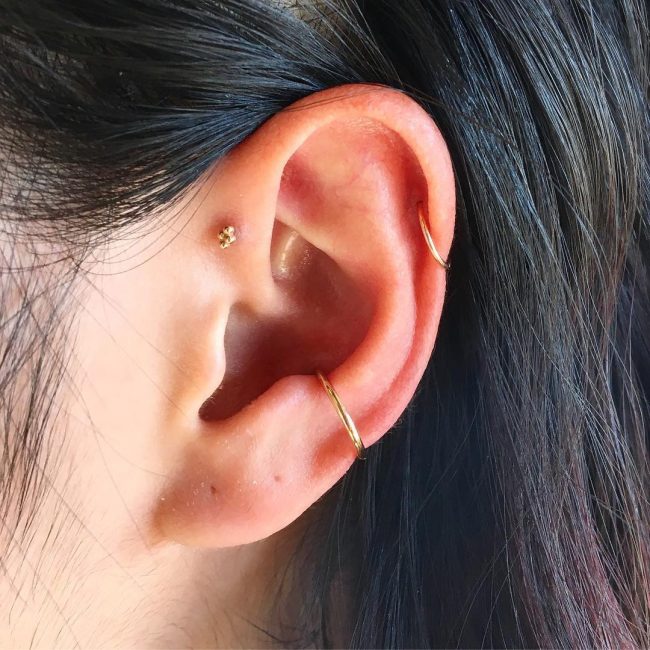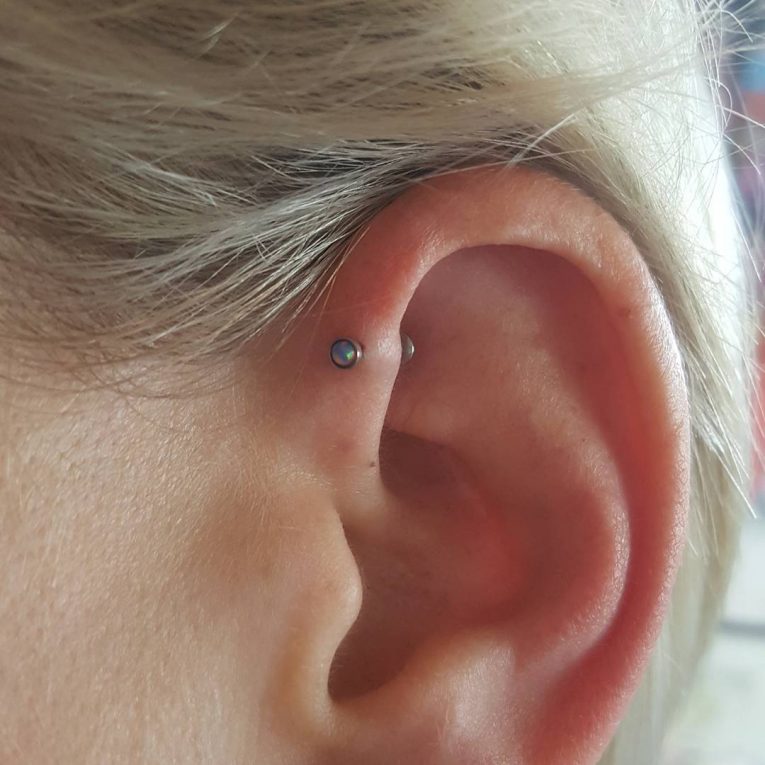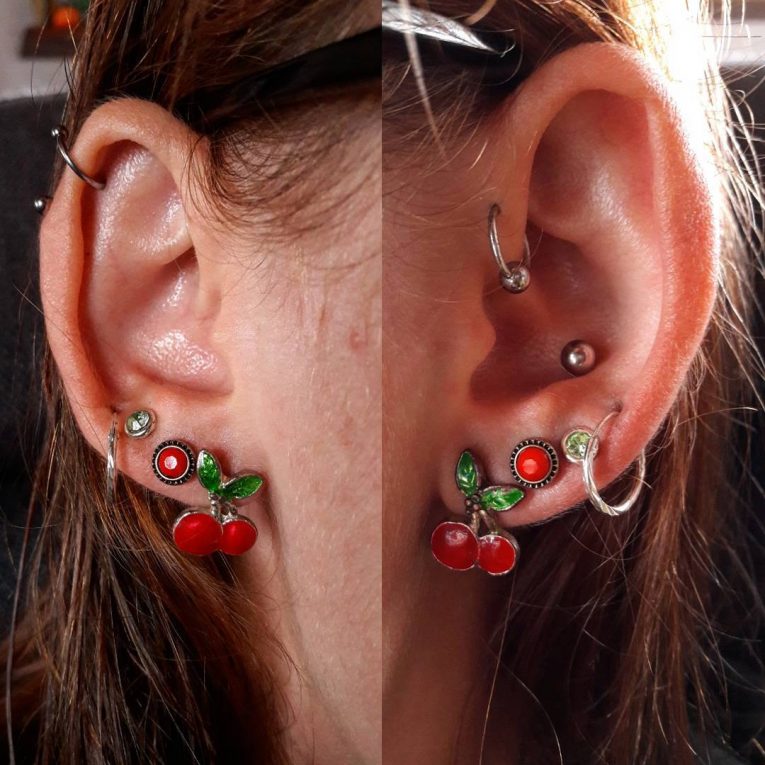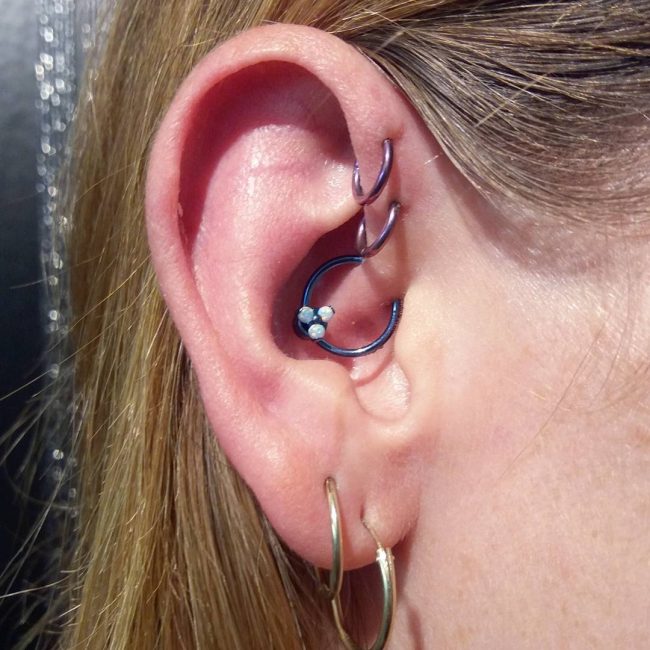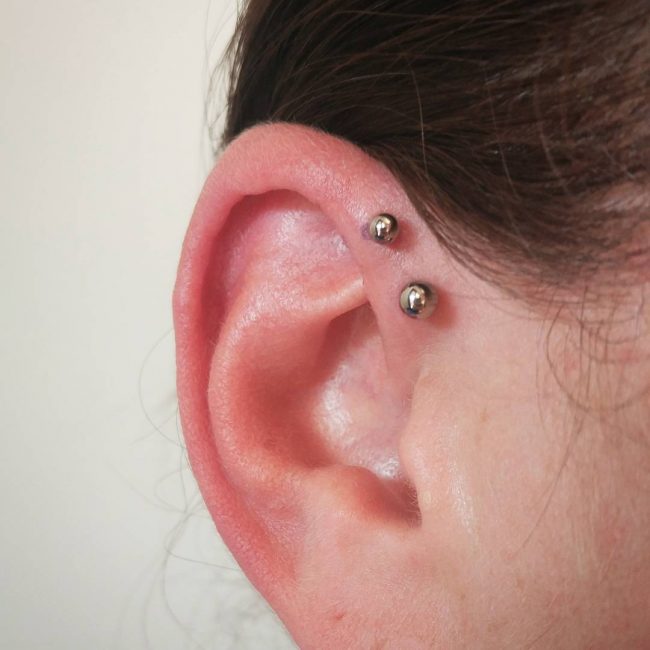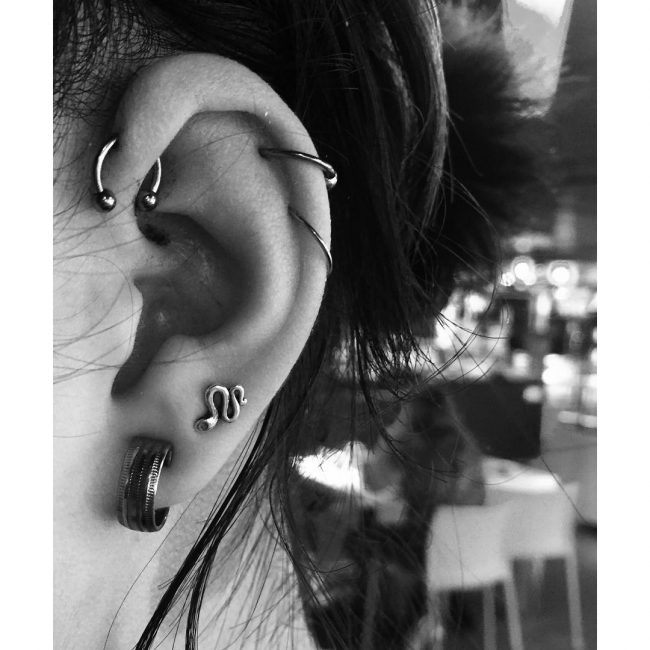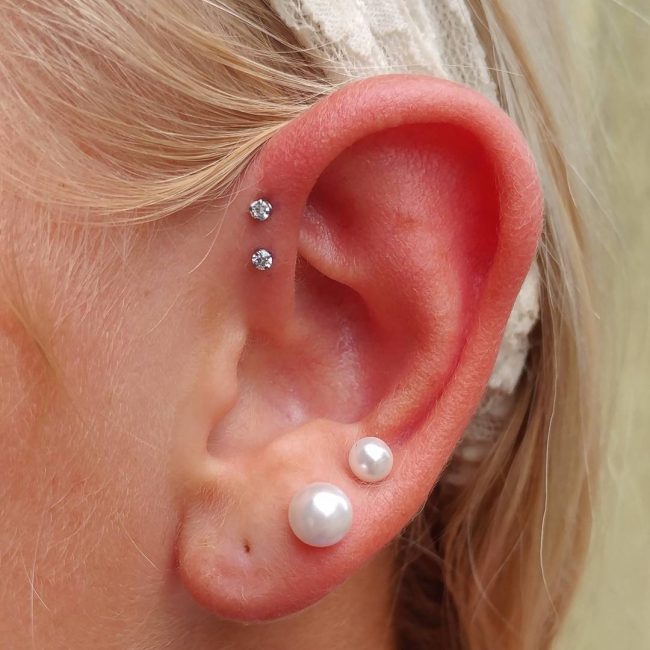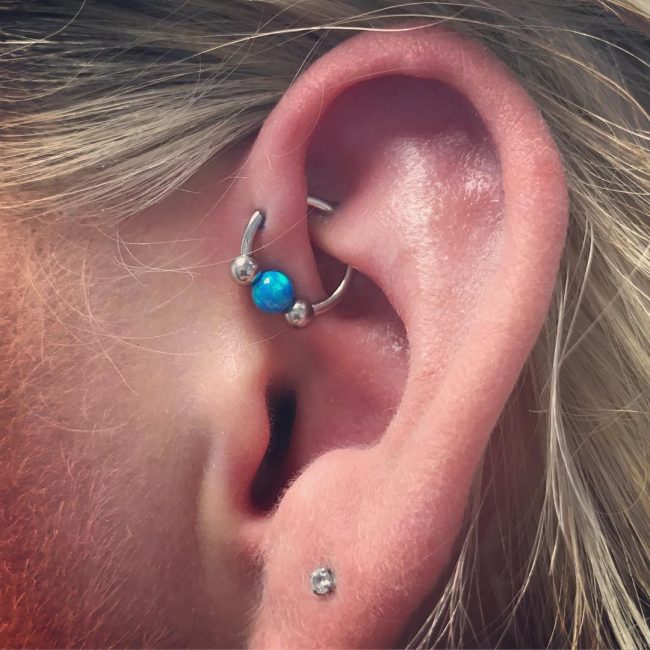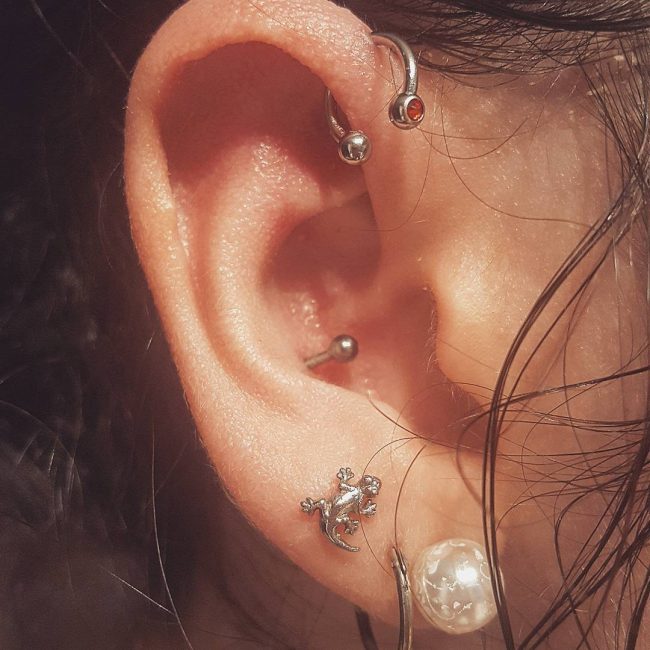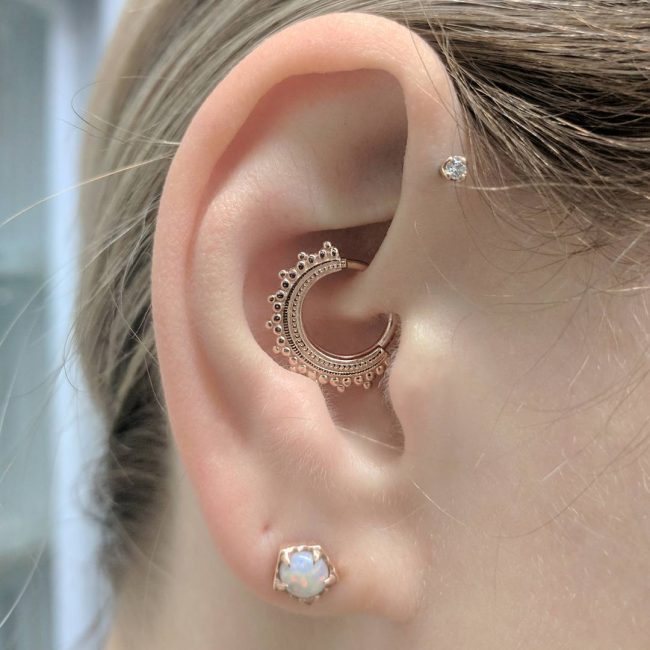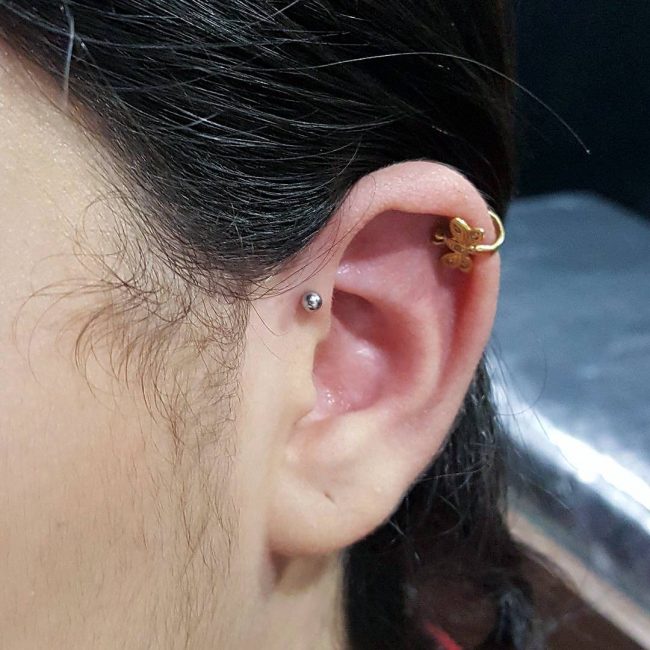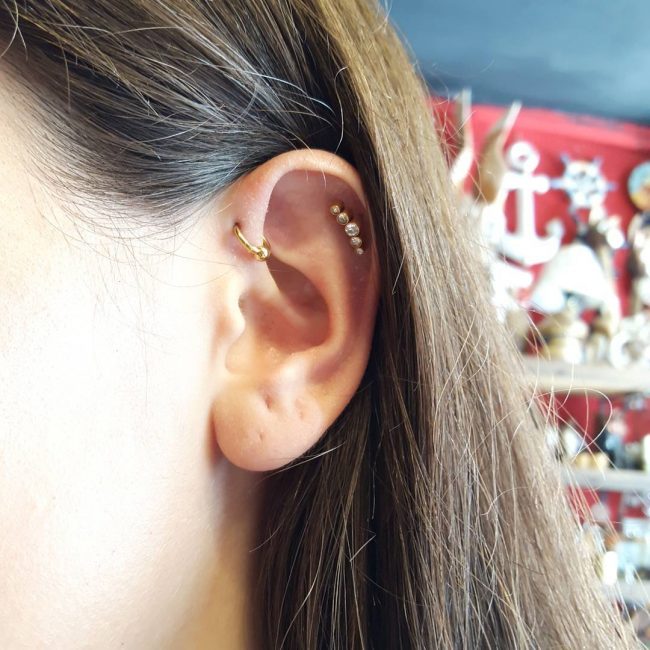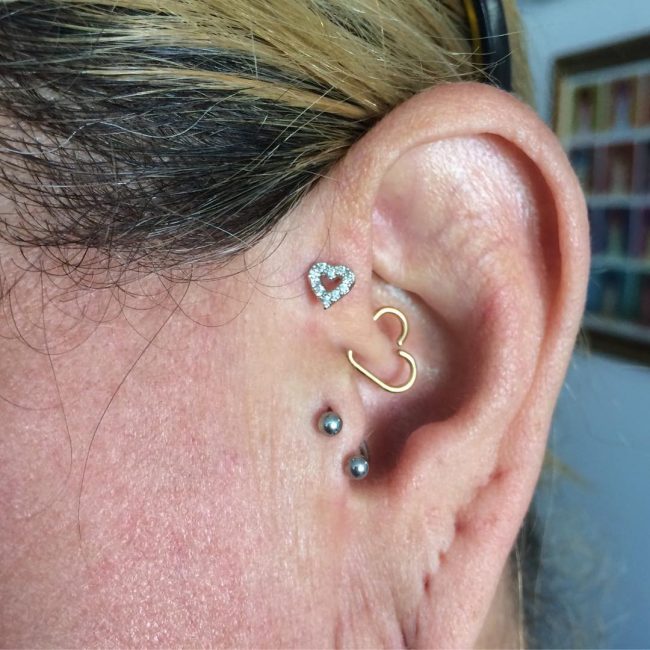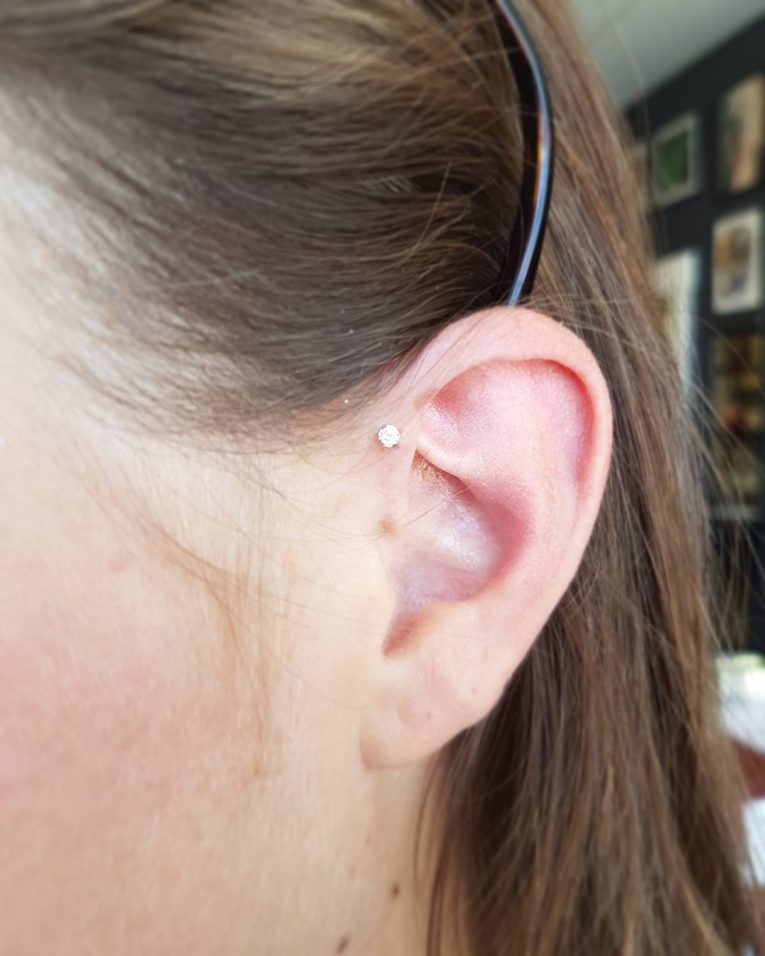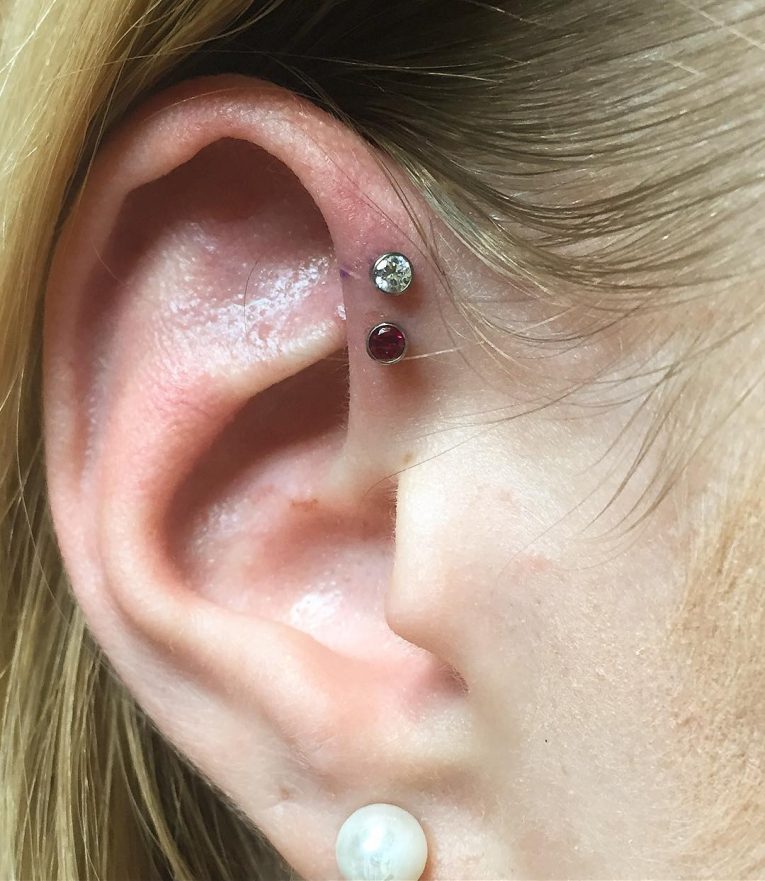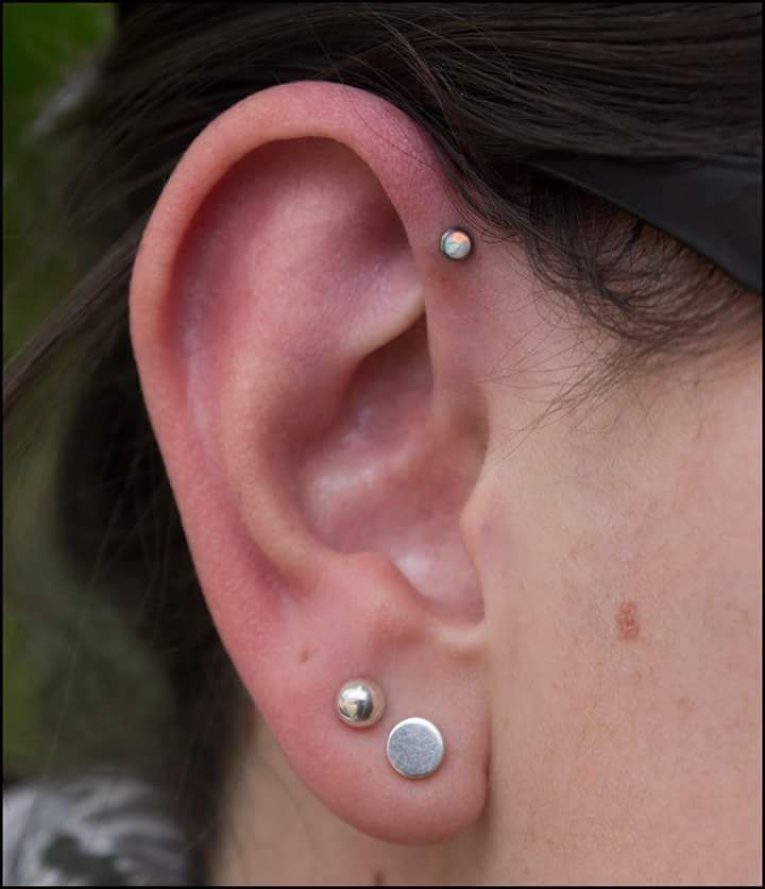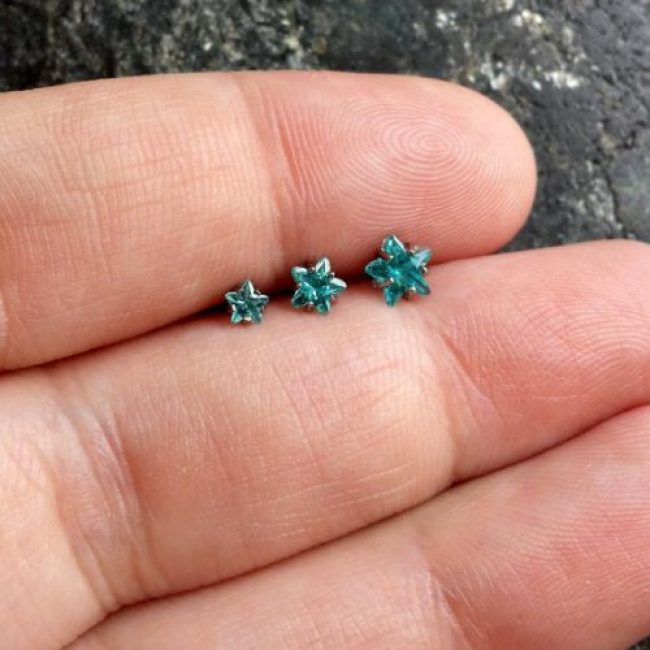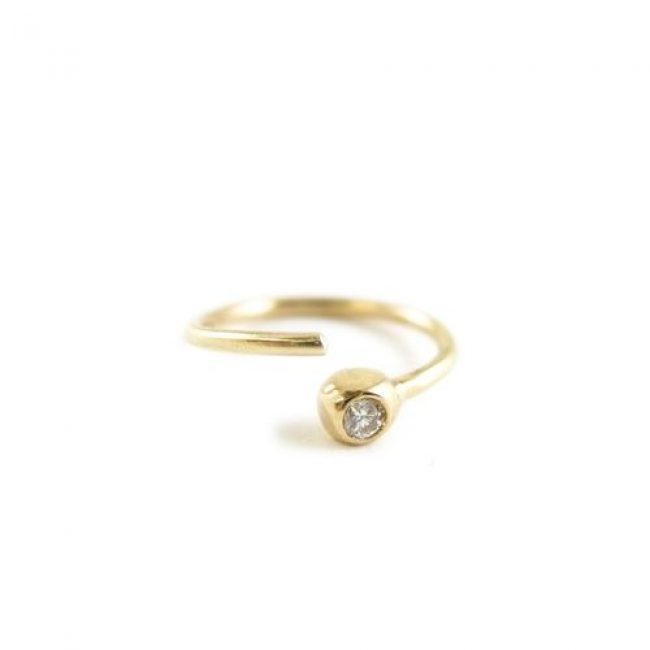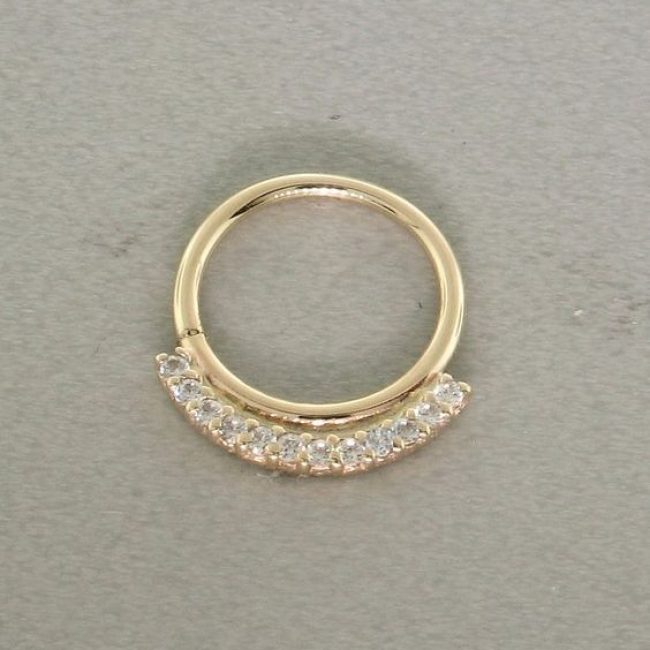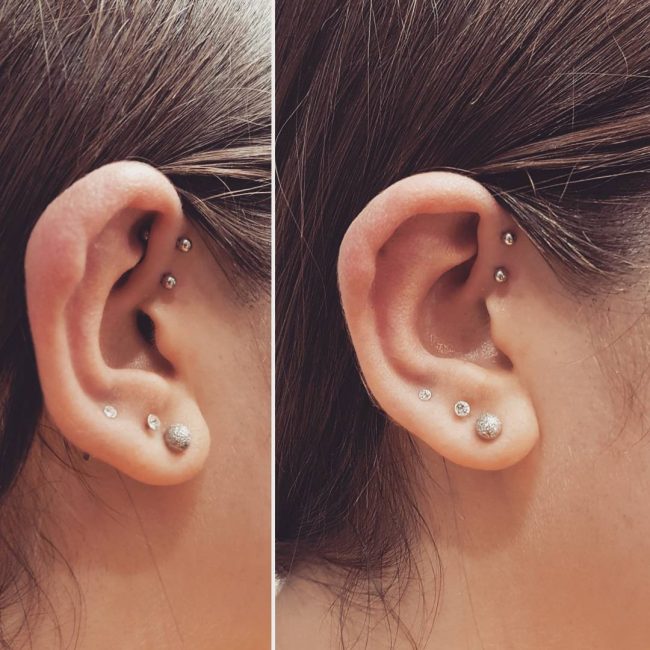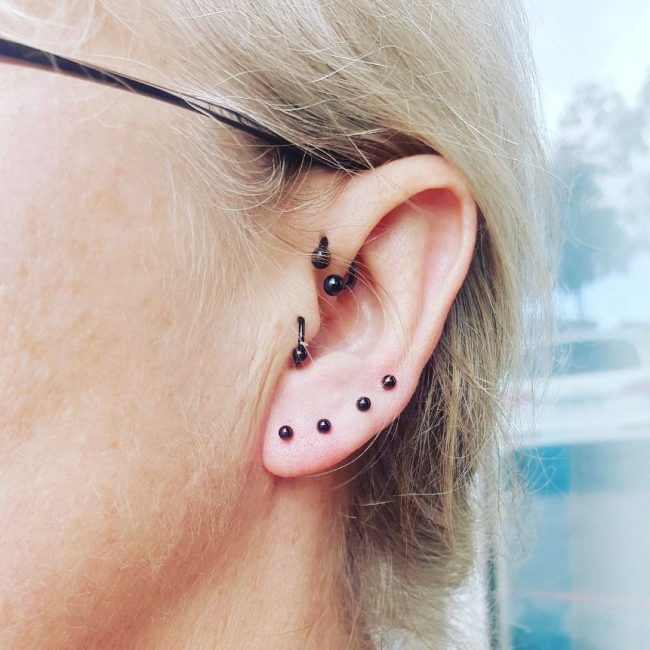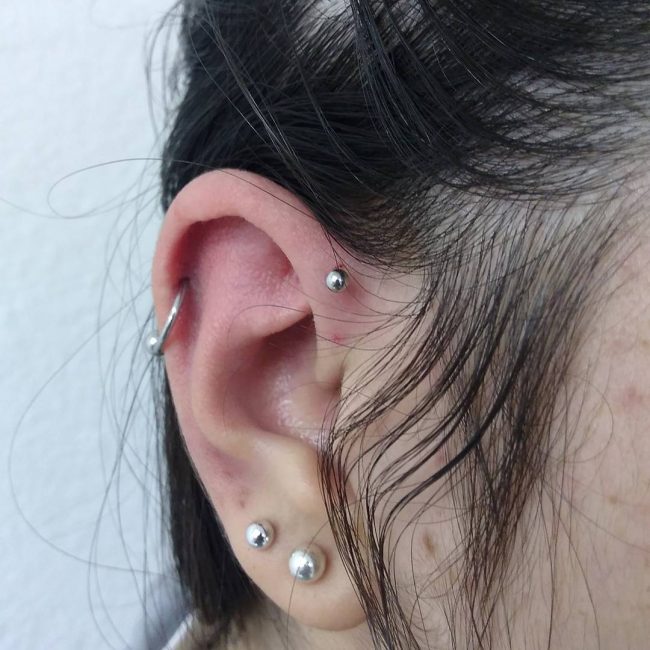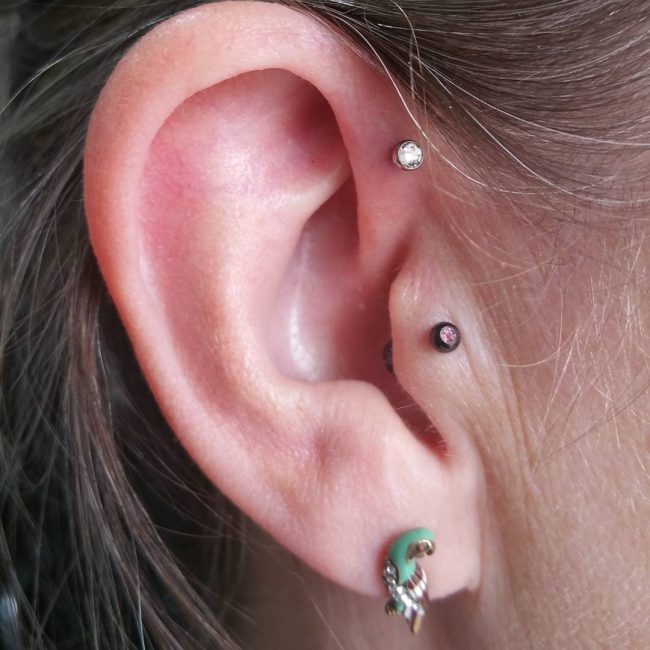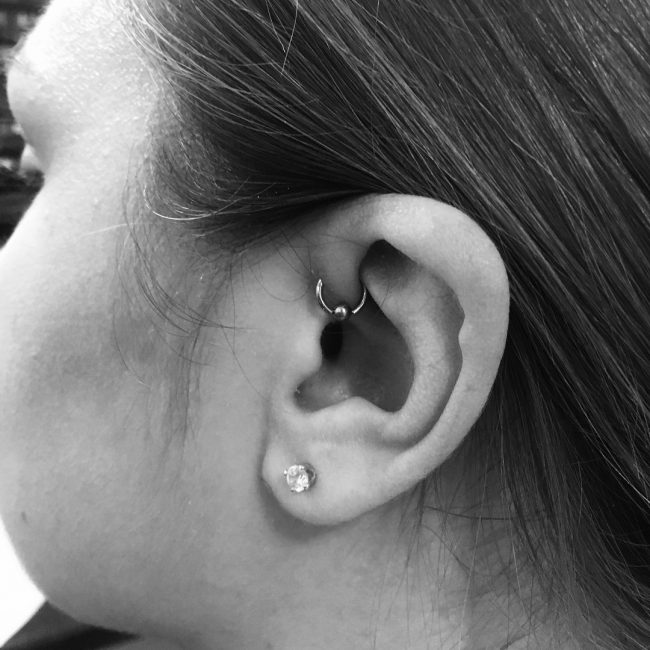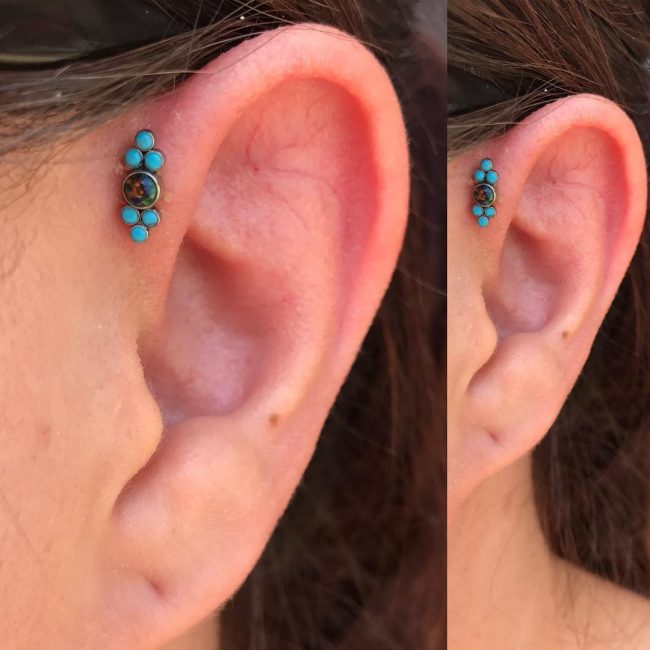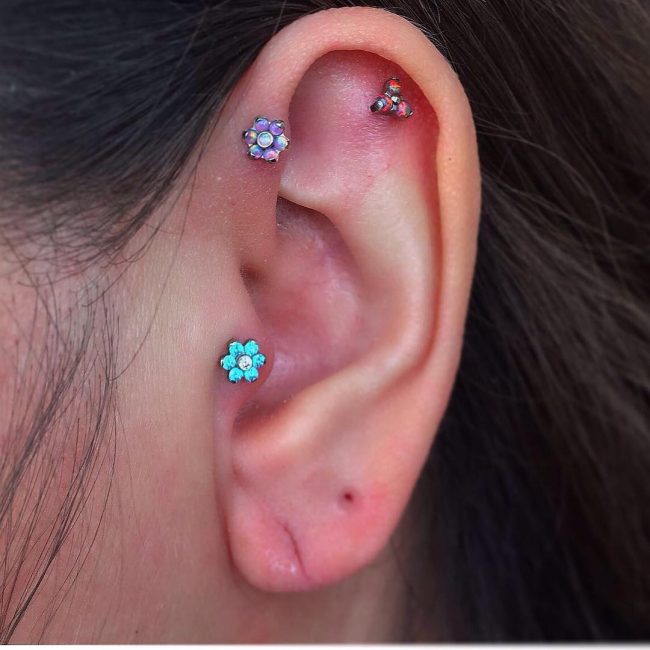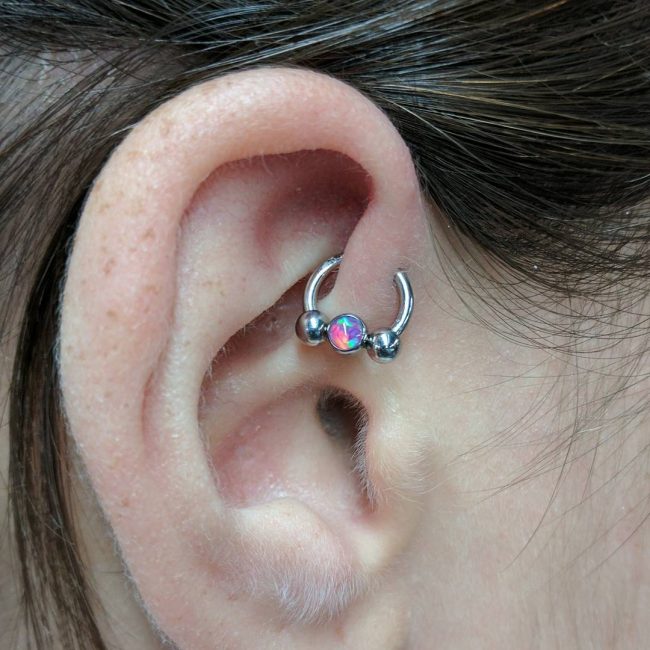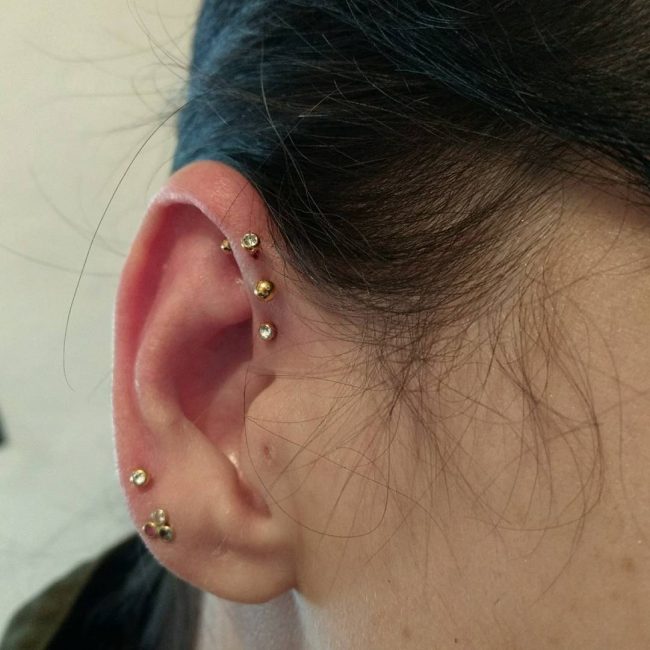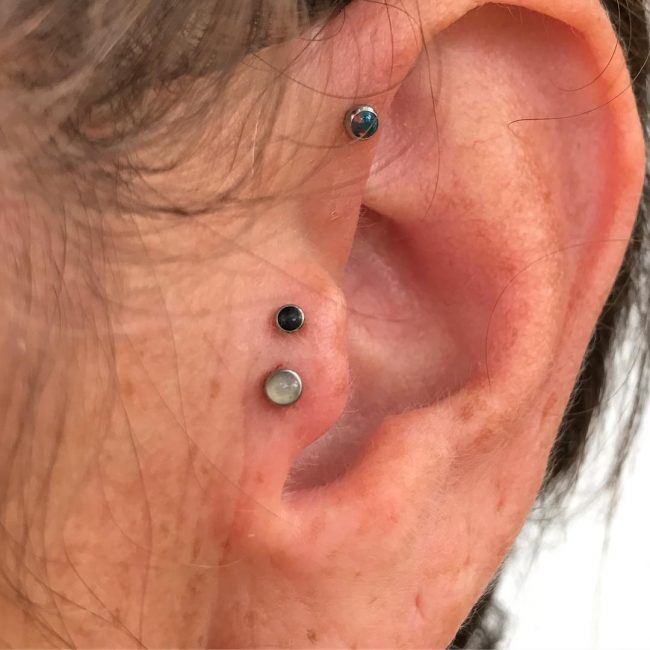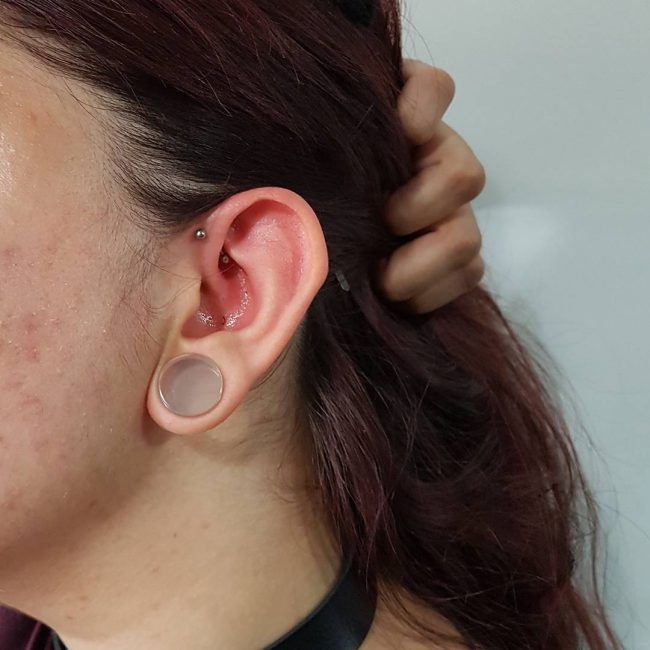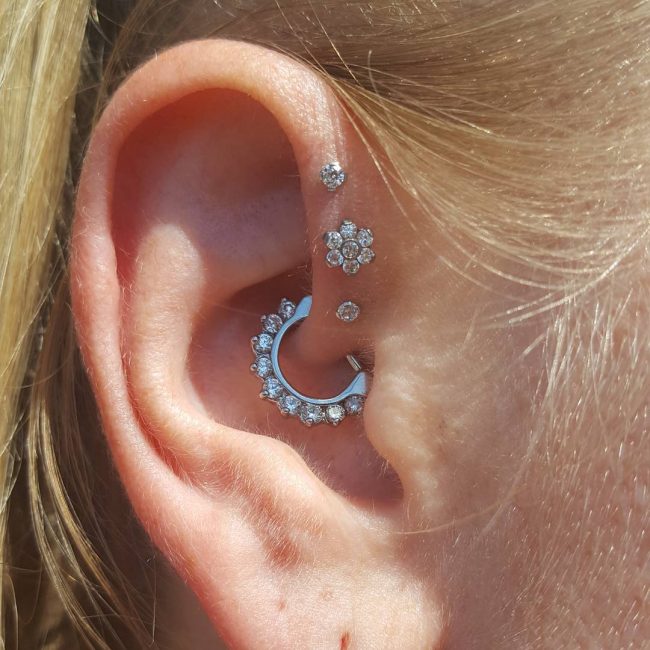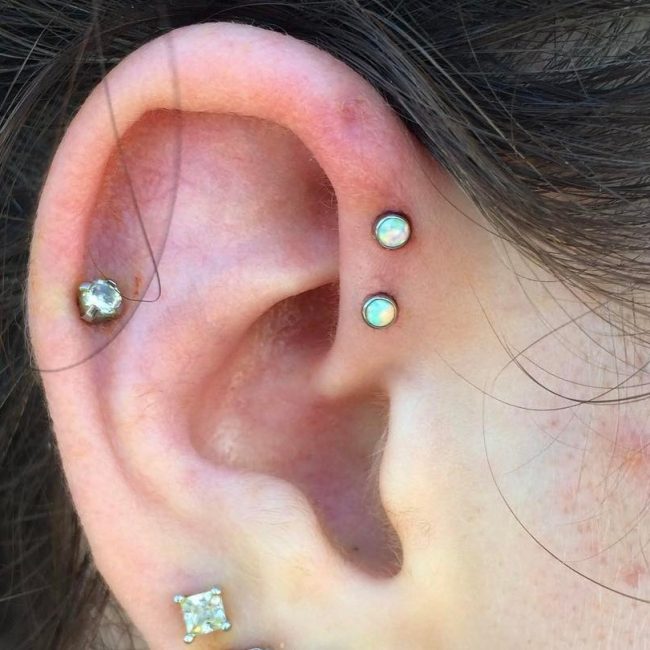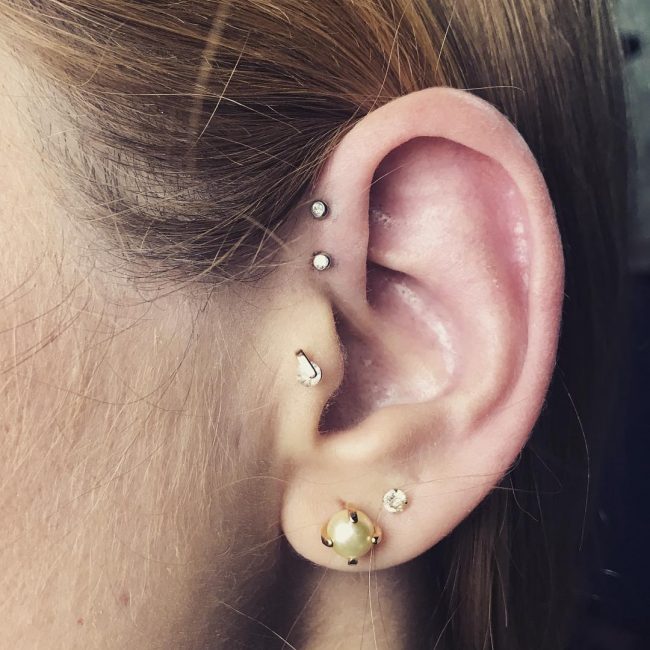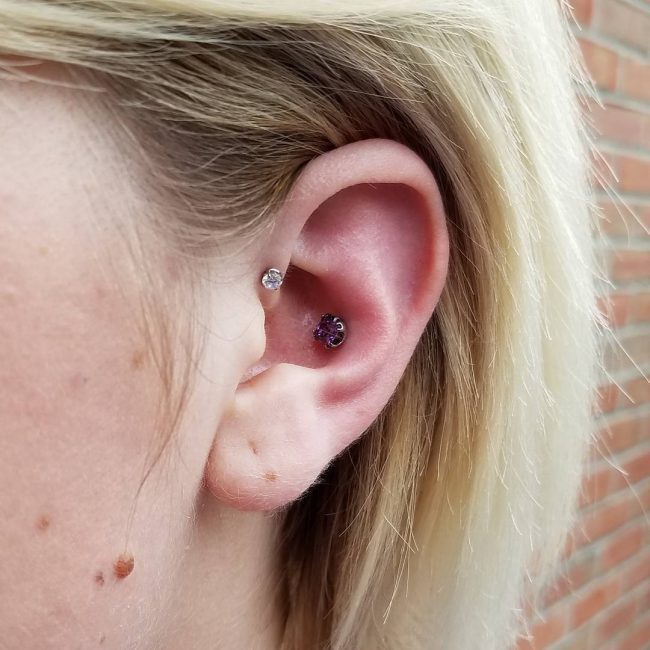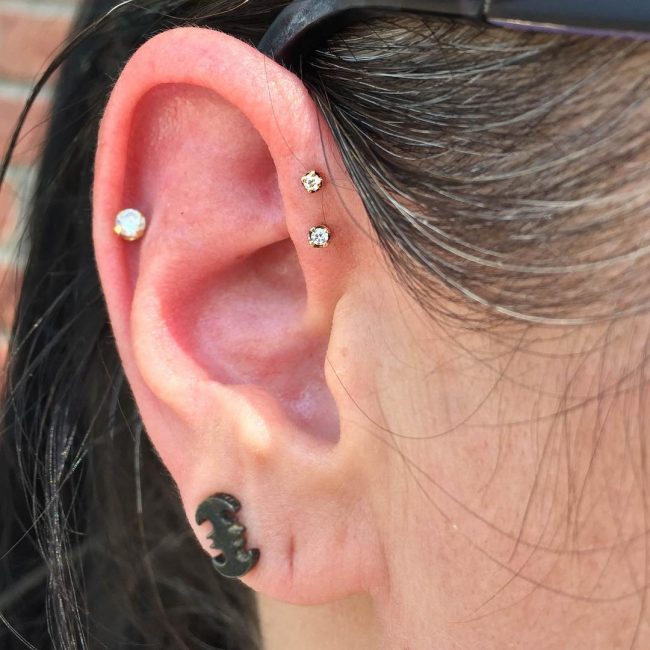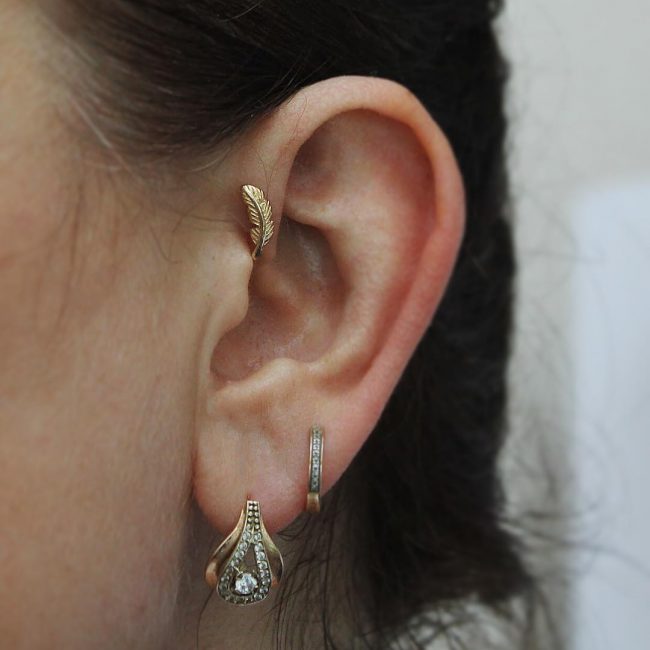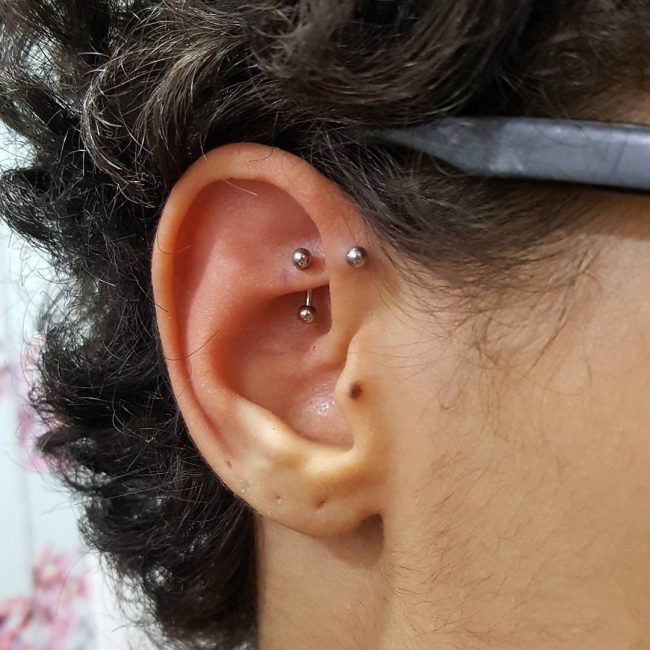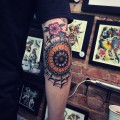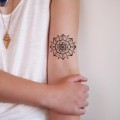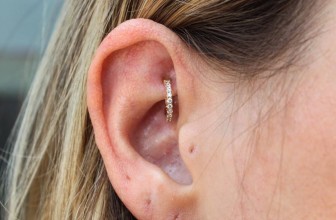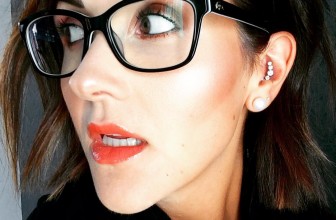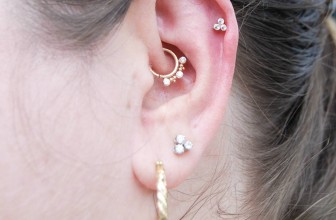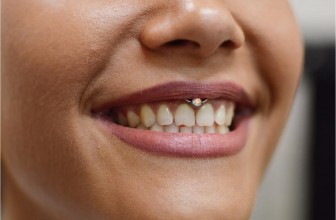60 Ideal Forward Helix Piercing Ideas – Try Something New in 2019
We live in a world where experimentation has become a norm. From Hollywood celebrities to your next door neighbor, it seems like everyone has something unique to be proud of. The trend is still the same, even in the world of body piercing.
Much can be said when it comes to ear piercing. In fact, ear piercing comes in many different types that can only be limited to your imagination. But today, we’re going to focus on forward helix piercing, which is perhaps one of the most popular piercings that won’t fail to impress.
Gone are the days when ear piercing, especially helix piercing, was regarded as a thing for outcast teenagers. It has transformed from being a thing associated with “moral decay” to a beauty statement embraced by many different societies around the world.
Helix piercing is more like a graduate lobe piercing where the helix part of the ear is pierced at a regular interval. Though done on a small part of the ear, this type of piercing provides a whole avenue of options to experiment with.
Contents:
History
Ear piercing is something that has been practiced since time immemorial. It’s a practice that has been well represented in historical records. This form of body modification, whose existence is attested by old mummified remains, is believed to date back at least 5,000 years ago.
It’s popularity picked up at the end of World War II. Just to give you some statistics, it’s believed that about 83% of men and women sport one or more types of ear piercing.
back to menu ↑Types of Forward Helix Piercing
As mentioned earlier, this type of ear piercing lets you experiment with different looks. In short, it comes in not one, but three different designs to add an element of versatility in your style.
Depending on the number of piercings made, it can be categorized into single, double, or triple helix piercing. We’re not sure which option will sit well with you. As such, it would be good to look at each type in detail.
- Single Helix Piercing: This involves making a single perforation, mostly on the top layer of the ear. Compared to double and triple piercing, single piercing is less painful and tends to heal much quicker.
- Double Helix Piercing: As the name implies, this form of helix piercing involves making two perforations on the top layer of the ear. Due to the double perforations, it’s no brainer that you’ll experience a slightly high pain compared to single piercing. Also, the healing duration tends to be a bit longer.
- Triple Helix Piercing: Here, you make three perforations on the top layer of the ear. It’s the most attractive helix piercing as it provides room for more jewelry. Despite its uniqueness, you should be prepared to experience extreme pain and prolonged healing time.
Precautionary Measures
There are several precautionary measures you need to consider before getting your ear pierced. This will help lessen the risk for infection and keep healing time at a minimum. Let’s go straight into looking at the must-know precautions that will help you get the most in helix piercing.
- Ear piercing isn’t something that can be done by just about anyone. For safety and quality purposes, you’ll need to seek the service of a professional.
- Be specific on the spot that you want your ear pierced. This will help avoid any kind of confusion and give you the look that you desire. Frustrations arising from piercing in the wrong spots aren’t uncommon. So be sure that the artist gets the message right prior to starting the process.
- Be cautious about the method or technique used to make the piercing. Ensure to settle for the legal method that involves the use of a sterilized needle. Though quite effective to some extent, the use of a piercing gun is illegal since it tends to cause infections and other health complications.
- The last precautionary measure applies to those with long hair. Longer strands tend to get in the way when trying to target a specific spot. Therefore it makes sense to keep them out of the way to avoid any risk of ear deformation resulting from piercing in the wrong spot.
Procedure
Helix piercing isn’t a straight forward thing. Before the real process, you need to do some preparations. Though often ignored, the sitting platform matters. Find a good chair and the right equipment for the job. In this case, a freshly sterilized equipment opened in your presence.
Apart from using a sterilized equipment, ensure that the piercer wears sterilized gloves to minimize the risk of infection even further. So what’s involved in the process? Well, let’s look at the procedure you’ll expect when undergoing helix piercing.
- Clean the forward helix or the whole outer ear. Use a clean cloth dipped in alcohol and wipe to get rid of dirt and germs.
- Make a mark on the specific spot at the top layer of the ear to reduce the risk of shattering the cartilage. Sanitize the spot once it’s been marked.
- Using a receiving tube, hold the tissue in place for safe puncturing and use a sterilized needle to make the piercing.
- Clean the pierced area using a saline solution and add jewelry in the perforation. Ensure that the jewelry is properly and gently screwed since the forward helix is one of the most sensitive parts of the ear.
Forward Helix Piercing Pain
Helix piercing is the most painful form of ear piercing. Therefore expect to experience some threshold of pain. The intensity tends to vary from one person to another. You might experience some swelling and redness in that particular area. When done right, the pain tends to be felt only in the pierced area.
Expect a pain level of about 5-7 on a scale of 10. But the pain shouldn’t put you off since, at the end of the day, the whole process is definitely worth it. After all, beauty doesn’t always come on a silver platter. Expect the pain to last a few hours to about 1-2 days.
back to menu ↑Infections and How to Care for Them
Lack of proper aftercare might result into infections. To avoid this, ensure to:
- Clean the piercing on a regular basis for a period of about 3 weeks
- Use a cleaning solution recommended by a professional piercer
- Get advice from a qualified professional or expert
- Clip long hair to prevent irritation
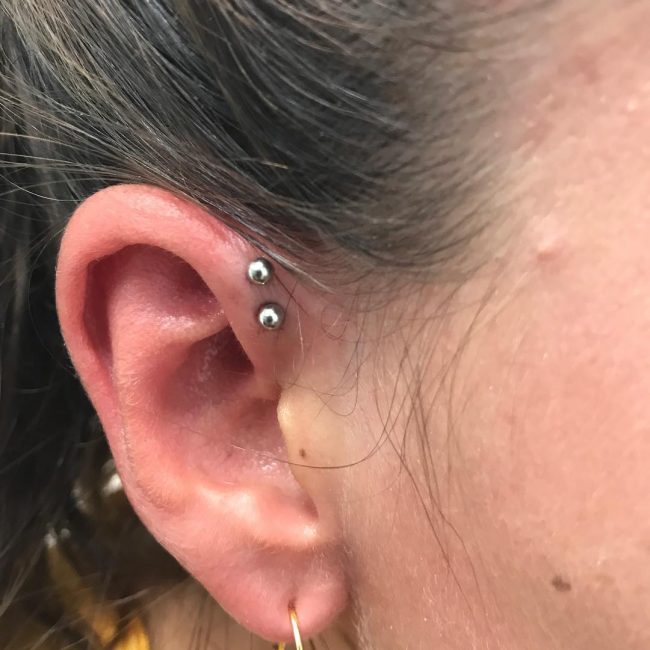
- Stay away from sharing products related to personal hygiene
- Avoid swimming while the piercing is still healing
- Avoid scratching or touching the piercing
- Keep the jewelry on to avoid blockage of the piercing
Sometimes, piercing infections can get you unawares. In such a situation, you need to be conversant with the different aftercare methods. Well, aftercare methods might vary from one person to another. Here, we’ll look at some of the most common and effective methods you can use to take care of infections.
- Use aftercare sprays or swabs to clean the piercing as directed by an expert. Cleaning should be done on a regular basis to prevent further infestation. Settle for a cheaper home-made option of warm salty water.
- Avoid cleaning with open hands and instead use a clean cotton ball that’s dipped in the solution. Though quite effective cleaning products, such as alcohol, hydrogen peroxide, Tea Tree Oil, and Betadine should not be used.
- As said earlier on, you should avoid touching the piercing since dirty hands might lead to further infection. Remember that it’s quite normal to experience some forms of swelling and redness on the pierced spot.
- Don’t change the jewelry in case of any infections. This is meant to prevent any further pain and avoid the formation of a lump. However, if you experience excruciating pain followed by bleeding, then it’s advisable to remove the jewelry and block the piercing.
- Avoid sleeping on the pierced side to avoid putting much pressure on it. Lots of pressure results in much pain and other complications.
Jewelry
Helix piercing without any jewelry doesn’t look quite appealing. In short, jewelry is one thing that adds a statement to your piercing. And it does more than just add a beauty statement. Jewelry prevents the piercing from blocking, reduces pain, and aid the healing process. Not all forms of jewelry qualify for use in a helix piercing. It’s recommended that you settle for bar jewelry instead of a hoop jewelry.
The curve on a hoop jewelry might harbor bacteria, something that makes your piercing more susceptible to infections. However, expect to experience a little discomfort as the straight bar jewelry digs into the ear.
Apart from the shape and design of the jewelry, you need to consider the weight factor. Obviously, you don’t want something heavy that will cause lots of discomforts. Use a lighter jewelry, which may come in the simple form of a stud.
You may also choose to consider the cost of the jewelry in case you want something more luxurious. But in doing so, always ensure that it doesn’t compromise the level of comfort you want.
back to menu ↑Healing Period
How long does helix forward piercing take to heal? Well, the answer isn’t that exact. Remember that the healing time will be determined by how well you take care of the piercing. What’s more, it may vary from one person to another due to factors, such as the difference in skin sensitivity. Some piercing might take up to a whole year to heal.
However, with proper care, expect a healing time of 3 to 6 months. Helix piercing tends to heal from outside in. Therefore, while the outer part might seem fine, don’t assume that the piercing is fully healed. Medications, such as anti-bacterial soap, have been known to make healing faster.
back to menu ↑Cost
Money does matter and as such, you might be interested in knowing the cost of helix piercing before getting one. One thing you need to know is that the cost varies from one studio to another. In short, the price isn’t constant so expect some little variations. What’s more, the cost will depend on the type of helix piercing you want. Expect to pay more for a triple helix piercing.
On average, expect to pay an average of $30-90 based on the reputation of the shop. Expect additional costs derived from the purchase of jewelry, aftercare products, and consultation. Some studios, such as Wallmart and Claire’s do it free once you make a purchase of earring ranging $20-25.
back to menu ↑FAQs
There are many different questions related to forward helix piercing. Below, we look at some of the most popular ones that might be of great help.
Q: How long do I need to wear studs after helix piercing?
A: It’s recommended that you wear jewelry for at least 6 weeks to facilitate the healing process.
Q: How long does it hurt after helix piercing?
A: Depending on the individual and type of helix piercing, expect the pain to resolve fairly quicker than the healing time, often lasting within a week.
Q: Should I expect any physical changes after piercing?
A: There are some physical changes you might experience, mostly in the form of swelling and redness.
Q: How long should I wait to wear dangly jewelry?
A: Unlike studs, dangly jewelry shouldn’t be worn the moment the piercing is made. Allow the piercing to heal for 6-8 weeks before wearing them.
Q: Does helix piercing close up?
A: Depending on the person, the gap might start to close as the healing progresses. Ensure to wear jewelry to keep it from closing.
Q: Why is it not advisable to change jewelry right after piercing?
A: Well, the starter jewelry is generally thicker and you need to give the piercing some time to re-heal around it. After 6 weeks, the hole will be large enough to accommodate your earring.
Conclusion
Forward helix piercing is among the most beautiful ear piercings. The pain is quite high compared to most ear piercings. However, with proper handling and care, expect the pain to last a few days; something that facilitates faster healing.
For better results, always seek the services of a professional or expert in ear piercing. This will help avoid infections and other complications. Take a moment, weigh your options, and decide which type of helix piercing will look great on you. Regardless of what type you choose, be sure to get something that will make heads turn.

